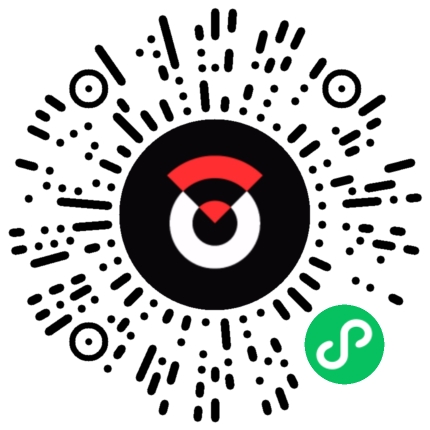
微信公众号

微信小程序
【摘要】 每日营销资讯
一、品牌
LVMH第一季度营收超分析师预期,时装和皮具制品业务收入创纪录
奢侈品集团LVMH酩悦轩尼诗·路易威登2021年第一季度的营收为140亿欧元,分析师预估为127.3亿欧元,较2020年同期增长32%,有机增长率为30%。除了精品零售业务仍受国际旅行限制影响外,旗下所有业务活动均对LVMH集团的良好业绩作出了贡献。特别是时装和皮具制品业务今年开局很好,收入达到了创纪录的水平。
国货彩妆品牌“SEVEN · JULY”完成数百万元种子轮融资
近日,国货彩妆品牌“SEVEN · JULY”完成数百万元种子轮融资,由日本护肤品牌花印投资。SEVEN · JULY 成立于2018年,定位于性别友好型的国货设计师彩妆品牌,历经3年研发,将于4月19日在天猫旗舰店正式上线卸妆膏、粉底棒 、唇釉和眉膏等产品,目标用户涵盖喜爱中性风格的95后和LGBT群体。
特斯拉副总裁:特斯拉在中国采集的数据会严格实现本地存储
4月13日,特斯拉副总裁陶琳在国家发改委组织的圆桌论坛上表示,特斯拉在中国采集的数据会严格遵守中国对于数据管理的法律法规,实现本地存储。
京东国际官宣新晋代言人刘雯
刘雯成为京东国际新晋代言人,她将携手京东国际冲破边界,发现新的世界,带领消费者用新的视界探寻世界,体验各国好物,同步世界生活。

许光汉正式成为 HFP 面膜代言人
HomeFacialPro 官宣许光汉成为品牌面膜代言人,许光汉携手 HFP 新品「果酸炮弹」开启肌肤焕新之旅,未来他也会和品牌一起,在热爱的领域保持专注,直至成为专业。据悉,代言人同款面膜已在 HFP 天猫官方店首发,消费者现在预定还可获得许光汉明信片等限量周边。
二、互联网平台
TikTok与IPG媒体公司合作,提供定制化品牌广告服务
据 Business Of Apps 报道,TikTok 近日对外宣布,公司已与 IPG Mediabrands 开展合作,为客户创建定制化广告。通过这一名为“Creator Collective”的合作项目,IPG 和 TikTok 希望能够帮助广告主在平台和创作者群体中更具影响力。
TikTok 公司全球商业解决方案总裁 Blake Chandlee 解释说:“在 TikTok 上,品牌方将可以听取社区意见,不断改变宣传内容和策略,成为平台上众多创作者中的一员。
微信公众号测试文章评论区“盖楼”,支持用户之间互动
微信公众号文章留言功支持用户之间互相回复留言,用户可以在公众号文章下“盖楼”。目前该功能仅开始小范围测试。在获得这项功能后,公众号作者可主动对单篇文章选择开启或关闭这项功能,未开启则显示“作者已设置其他人不能回复”。功能开启后,用户间的评论内容会自动上墙显示,不需要作者另外精选,回复内容对所有人可见,不过作者可以对不合适的留言进行删除或取消精选。
腾讯云打造印尼数据中心
据外媒报道,腾讯云于 4 月 12 日宣布,公司已在印尼推出了首个数据中心,该中心位于雅加达的中央商务区。
据悉,该数据中心已经完成了本地和国际主流 ISP 骨干网络接入,加上腾讯云 BGP 技术,将为印尼及周边区域客户提供高质量的弹性计算、存储、安全等云服务,助力区域内的企业和组织快速实现数字化转型。
360搜索回应“北京市监局处罚200万”:积极整改
针对“北京对360搜索发布虚假违法广告案处罚200万元”一事,360搜索通过官方微博发布公告称:“今日,我司收到《北京市市场监督管理局行政处罚决定书》。对此,我们诚恳接受,坚决服从,并积极配合相关部门进行整改,全力保障消费者的合法权益。”
三、服务机构
巨量引擎旗下穿山甲发布聚合产品“GroMore”
近日,巨量引擎旗下全球开发者成长平台穿山甲发布聚合产品“GroMore”,该产品整合多个主流广告平台资源,支持App开发者将广告请求同时发送至多个平台,并根据各平台的出价能力,合理分配流量,最终达到广告收益最大化的目的。聚合产品在海外市场发展较早,但在国内尚处起步阶段。
Marianne Malina将出任CPB全球CEO
CPB日前正式委任此前效力于宏盟麾下广告代理商GSD&M并出任总裁的Marianne Malina为新任全球CEO。她将于今年5月17日正式履新,并加入一个不断扩大的领导团队,该团队成员包括新近聘用的首席创意官Jorge Calleja和CPB老将兼董事总经理Ryan Skubic,以在当代重塑CPB行业传奇领导者的形象。
四、案例
日本海飞丝动画《追踪》:可恶!竟然因为头屑问题被捕了
近日,海飞丝在日本推出了动画广告《追踪》,用一种轻松幽默的方式公开谈论头皮屑问题,在日本的文化语境之下戏剧性地展现出海飞丝为头皮屑问题所提供的解决方案。
天猫和李佳琦共同揭秘《爆款中国》
天猫金妆奖联合新世相拍摄了纪录片《爆款中国》,首次揭秘护肤、彩妆国牌崛起的幕后故事。
五、趋势洞察
FreeWheel:2020下半年美国视频市场报告
FreeWheel总经理戴夫·克拉克(Dave Clark)表示,根据分析,2012年第四季度,12%的视频浏览量是在笔记本电脑以外的设备上观看的。相比之下,2020年下半年,非桌面设备占广告浏览量的84%,份额增加了7倍。消费者已经回归到客厅观看电视,联网电视(CTV)在这一转变中扮演了重要角色。目前CTV占所有衡量的广告浏览量的62%,其中Roku和Fire TV贡献了72%的广告浏览量(分别为43%和29%)。
内容营销协会:2021年技术内容营销报告
由于新冠大流行,技术营销人员迅速做出了改变
大多数受访者表示,当新冠大流行来袭时,他们的企业迅速做出改变。关于内容营销最大的改变有两点:改变目标/信息策略(71%)和调整编辑日程(66%)。
84%的受访者希望他们所做的一些改变在可预见的未来仍然有效。
更多的技术营销人员正在使用虚拟活动和直播
技术营销人员使用虚拟活动/网络研讨会/在线课程的比例从上一年的74%上升到83%。直播的采用率从13%增长到33%。大公司的营销人员更倾向于使用直播(53% vs 33%)。
更密切地关注转化和合格的潜在客户(MQL)
“转化率”上升到内容营销指标列表的首位,采用率从去年的81%提高到90%。此外,使用MQL作为衡量标准的营销人员比例从64%上升到77%,而使用社交媒体分析的营销人员从85%下降到75%。
更多的公司成功地利用内容营销产生需求/潜在客户
86%的受访者表示,在过去12个月他们成功地利用内容营销产生了需求/潜在客户,而去年这一比例为79%。
2021年将投资网站变化和内容创作
受访者预计,网站优化(67%)和内容创建(66%)将成为2021年公司内容营销投资的主要领域。
天猫美妆:GMV两年翻一倍,603个品牌年成交超过1亿元
天猫快消事业部总经理激云在2021金妆奖活动现场表示,天猫美妆2年就达成了整体3年业绩翻番的目标。2020年,3000个美妆商家开出天猫店,天猫快消行业多了1亿新消费者,品牌商累积了10亿人次的会员,会员客单价高出平均水平的2-3倍。3个品牌年销售额突破50亿元,42个品牌跻身年销售10亿元,还有603个品牌年销售过亿。
六、海外
TikTok推出购物和重定向广告
TikTok wants in on the ecommerce action that has skyrocketed during the COVID-19 pandemic. It's introducing new ad formats designed for purchase conversions on the platform. Business Insider reports that the Chinese video app plans to roll out new tools l that allow brands to show their products, retarget interested users, and highlight sales and promotions. TikTok has been testing several new formats including collection ads and dynamic product ads. Collection ads allow brands to combine product catalogs and branded videos to lead consumers to product landing pages. Dynamic product ads automatically retarget people with products according to their online behaviors. The tech giant plans to release these new features in the first half of 2021.
谈谈第一方数据,因为它不属于品牌?
GDPR, CCPA, CPRA and nearly every other privacy-related regulation is the product of consumer backlash.
You can almost hear the chorus: “Stop collecting and selling our data so that marketers can deploy it against us in algorithms.”
“Stop using our personal data to manipulate us into buying stuff we don’t want, don’t need or can’t afford.”
“We want our privacy back.”
The sentiments and principles that underpin these laws are clear. Consumer data should be owned by the consumer. If we want to collect and use it for any marketing purpose, we must explain how we will do so – and obtain consent and permissions. (GDPR explains this quite nicely here.)
But to get that agreement, the consumer must understand the trade-off. They need to understand what’s in it for them and see real value in the arrangement. On the whole, I’d argue we’re not yet holding up our end of the bargain – if we were, there’d be no outcry against Google’s latest moves.
We're not gonna take it anymore.Why are we failing? Is it because we’d rather stay one step ahead of the regulator rather than stop and embrace the consumer?
It all goes back to the language we use to describe user data and privacy, coupled with the confirmation bias – some might call it a love affair – we have with our own soundbites and cleverness.
Roku Bolsters评估计划可跟踪跨屏广告效果
Roku said Tuesday it added six new ad tech companies to its Measurement Partner Program to help retail, CPG, pharma, auto and other advertisers better measure ad campaign performance — such as mobile app downloads — as marketers shift their spending to streaming.
Adjust, Affinity Solutions, Branch, IRI, Kochava, and Veeva Crossix have joined Roku’s partner program — launched in 2018 to help the industry measure the impact of ads in streaming TV — a roster that now includes more than 20 partners.
Adding the six new partners lets marketers measure metrics they couldn’t before, including upper-funnel brand metrics and performance outcomes such as mobile app downloads, store visits, and product sales for retail, pharmaceutical, CPG, and auto advertisers.
These measurement partners can be accessed through Roku’s OneView ad buying platform, the dataxu DSP it rebranded in 2020.
“The promise of CTV is of course, that you can measure impressions on a 40- or 55-inch TV screen as you would a digital impression,” Gaurav Shirole, Roku’s director of ad measurement, told AdExchanger. “A lot of the newer partnerships we announced are basically allowing our marketers to go down the funnel to add more behavioral outcomes, whether it's CRM, sales lift or app downloads and installations or location visits or healthcare outcomes.”
Google的隐私权计划带来了变化,但没有营销人员认为的那么多
In the weeks since Google left the industry in no doubt of its view on user-level tracking, marketers have been buffeted from one uncertain situation to another. But for all this uncertainty, there’s a nagging sense of familiarity about it all — Google restricting third-party ad tech companies from operating on its networks. After all, it’s hard to see how a world where privacy is the default and addressability is the exception does anything but advantage the walled gardens that have the largest reach and the best targeting options through established customers and lookalike audiences.
“I don’t find Google’s plan too surprising as it’s essentially increasing the height of its garden wall — just as it always has done,” said a marketing procurement director at a pharmaceutical business who spoke to Digiday on the condition of anonymity. “I highly doubt that this change is done purely to support the privacy topic and is disconnected from future profit streams that Google is anticipating.”
In many ways, a world without third-party cookies will be similar to the one with them — marketers dumping money into Google.
“If you are a brand that has poured millions of dollars in hard costs and sweat equity into the Google ecosystem, you are that much more inclined to adopt Google’s prescriptive privacy alternatives like Federated Learning of Cohorts,” said Travis Lusk, head of tech at media management consulting firm Ebiquity in North America.
随着第三方Cookie消亡的迫在眉睫,品牌商正在寻找重新定位的替代品
Last year’s precipitous drop in brick-and-mortar retail sales left brands relying more than ever on digital advertising and retargeting to acquire customers. But the invasiveness of retargeting has long put consumers in a conspiratorial mood (“How the hell does my phone know I need to buy toilet paper?”).
Now, the big platforms like Apple and Google as well as browsers like Firefox are all blocking or planning to block third-party cookies, the primary method that brands use to retarget customers. Those changes, coupled with cookie-curtailing legislation like Europe’s GDPR, mean third-party retargeting is about to get much more difficult.
That leaves brands that rely on retargeting in a bind. Without the traditional source of third-party data, brands will have to rely on alternatives like first-party data or data from retail partners. There’s also hope that Google’s alternatives to cookies will help pick up the slack, but there aren’t many details yet on how well those options will work. Right now, everyone is just trying to get their bearings, buyers told Digiday.
“Many brands are in the education phase, learning what it means to really build a privacy-first approach to marketing, and what is going to break when these new updates hit,” said Shelley Pinsonneault, vp of verified global technology at Publicis Media.
整理自互联网
Morketing每日监测11.27:百年老厂牌JWT消失与伟门合并;天猫升级为“大天猫”;微博广告收入增长将进一步放缓;黑五线上销售额 62.2 亿美元;
Morketing每日监测11.29:微软超越苹果成为全球市值最大公司;江南春:拼多多是三四线城市的消费升级,视频付费将愈演愈烈;雷军:AI+IoT是小米未来10年核心战略,已与宜家达成合作
请先注册/登录后参与评论